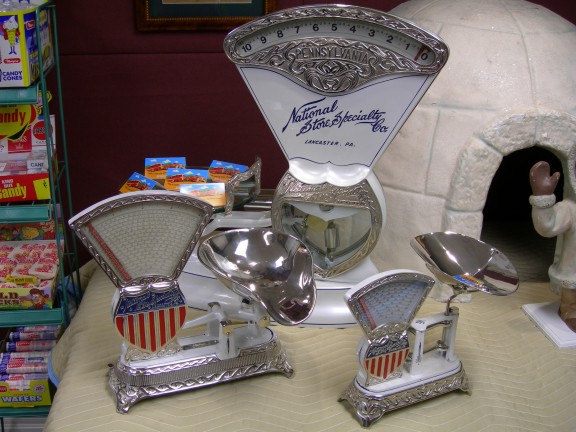|
July 2006 Featured Collection |
|
General Store Scales |
|
|
|
All of the scales in the Antique Warehouse collection have been restored to better than original condition. Most of the scales are constructed of cast iron and are very heavy, many have counter weights as well. All of them have shinny paint finishes, with ornate pin stripping and decorative designs. They also feature highly polished brass and nickel plated areas that accentuate the scale. Often the manufacturers name and other information about the scale is engraved or cast right into these brass pieces. All of the scales in our collection are computing scales. However complex this may seem, it is extraordinarily simple. The standard system for a computing scale is for the front side of the scale to display the actual weight of the product. The customer will see this. On the back side of the scale, where the clerk is standing, is a large amount of numbers. These numbers correspond with the weight and price of the object being weighed. For example if salt water taffy is 15 cents a pound, the clerk will put the amount the customer wants on the scale, and find the 15 marked on the arm that swings to the weight. Where the 15 cent line stops would be the price of the taffy. Click here to view an image of the back side of a computing scale. This image is of a two pound scale and it can price items from 10 to 60 cents, with varying graduations. Varying graduations means that there is not one consistent order the price increase by. If a scale has one and two cent graduations, the price will usually start at a lower number for example five cents a pound, and increase by one cent until it reaches 20, then it will increase by two cents a pound. In total, there are 13 general store scales in the Antique Warehouse collection. All of them are special in there own way with elaborate paint jobs and highly polished brass or nickel. The standard type of scale in our collection is the "fan" style. There are nine of these, three "barrel top" scales, and one "open face" scale. Click on any of the images below to be taken to the scale collection page so you can view all of the scales individually and learn more about them. Bill and Jan Berning. Scales, A Collectors Guide, 1999. |
||
 |
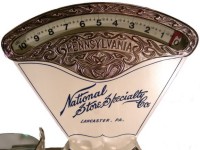 |
|
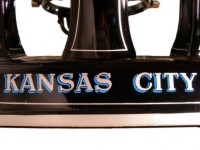 |
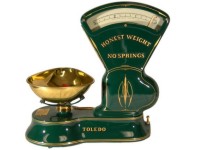 |
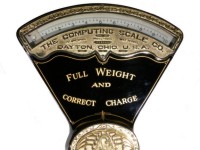 |
